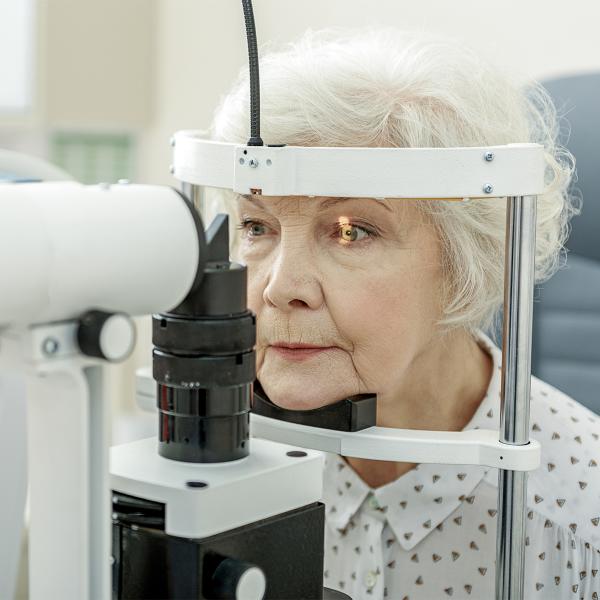What is a macular pucker?
A macular pucker is a rare eye condition that can make your vision wavy or distorted. Most of the time, experts don’t know what causes it.
Many people who have macular pucker have mild symptoms — and most people don’t need any treatment. But if a macular pucker makes it hard to do daily activities, you may need surgery to help you see more clearly.
What are the symptoms of a macular pucker?
A macular pucker can make things wavy or distorted. Straight lines — like a sentence in a book — might look bent or wavy. When you read, you might notice that letters or words are hard to read, missing, or crowded. You may also have trouble seeing small details.
If the macular pucker gets worse, letters or objects may be so blurry that you have a hard time seeing them at all.
Macular pucker usually affects 1 eye. In most cases, symptoms are mild and or get worse slowly. Some people get used to the changes in their vision — but if you notice any changes, it’s important to talk to your eye doctor.
In rare cases, a macular pucker can cause severe vision loss or lead to a related eye condition called a macular hole.

Is a macular pucker the same as age-related macular degeneration?
No. Macular puckers and age-related macular degeneration may have similar symptoms, but they’re very different conditions. If you aren’t sure which condition you have, talk to your eye doctor.
Am I at risk for a macular pucker?
A macular pucker can happen at any age, but your risk goes up as you get older.
You may also be at risk for a macular pucker if you:
- Have floaters
- Had vitreous detachment
- Had a retinal tear or retinal detachment
- Had an eye injury, laser treatment, or eye surgery
- Had uveitis (inflammation in your eye)
What causes a macular pucker?
Most of the time, a macular pucker happens because of normal changes in your eye when you get older.
As you age, your vitreous — the clear gel that fills your eye and gives it a round shape — shrinks and pulls away from your retina (the light-sensitive layer of tissue in the back of the eye). This is called a vitreous detachment and it happens to everyone as they get older.
In some people, a membrane forms on the surface of the retina. This membrane can create wrinkles or “puckers.” If the membrane forms over a part of the retina called the macula, it can cause a macular pucker.
How will an eye doctor check for a macular pucker?
Your eye doctor will check for macular pucker as part of a dilated eye exam. The exam is simple and painless. Your doctor will give you some eye drops to dilate (widen) your pupil and take a look at the retina.
If your doctor thinks you have a macular pucker, they may also do a test called an optical coherence tomography (OCT). This test helps the doctor see how severe the macular pucker is. OCT is a quick and painless test that uses light waves to take detailed pictures of your retina. Before the test, your doctor may give you some eye drops to dilate (widen) your pupil.
What's the treatment for a macular pucker?
Most people with a macular pucker have mild symptoms that don’t need any treatment, but you’ll need to get regular eye exams to make sure the macular pucker doesn’t get worse. Your eye doctor might also recommend glasses or a new glasses prescription to help you see better.
If a macular pucker makes it hard to do everyday activities, like reading or driving, talk to your eye doctor. You may need surgery to remove the membrane and smooth out the wrinkles on your retina.
There are 2 types of surgery for a macular pucker:
- Vitrectomy. During a vitrectomy, the doctor removes the vitreous and then removes the membrane from the retina. Learn more about vitrectomy.
- Membranectomy. During this surgery, the eye doctor removes the membrane from your retina. This surgery usually takes less than 30 minutes and can happen in a doctor’s office.
